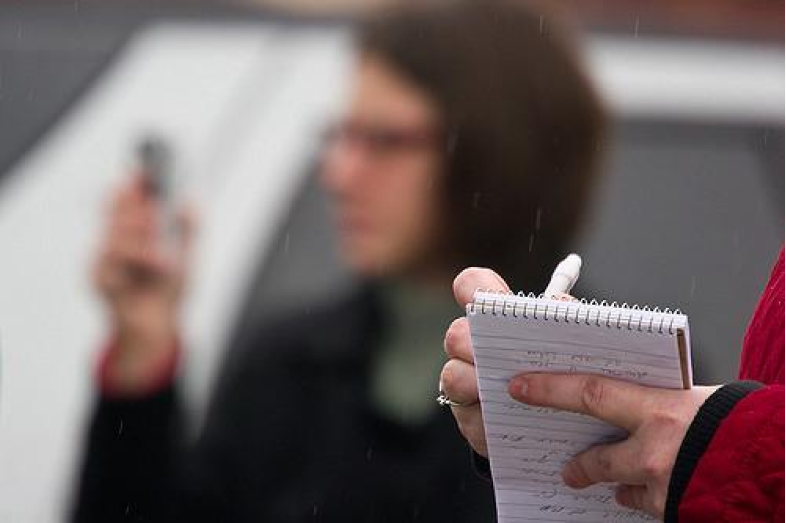

In a journalism class at the University of Central Florida Nicholson School of Communication, students learn how to pitch to an editor and tell stories — practical skills they’ll need to excel as future reporters. But they’re also learning about life in a multicultural newsroom.
Gabrielle Russon of the Orlando Sentinel writes that in the Knightly Latino course, which began about a year ago, students focus on telling the stories of Orlando’s Latino community in English or Spanish. Not all students in the class are fluent in both languages — some don’t speak any Spanish at all — but the goal is to give students exposure to working with people from different countries and different language backgrounds.
Federico Subervi, a media scholar and consultant and president of the Association for Latino Media, Markets, and Communication Research (ALMMACR), has seen a push for similar bilingual or Spanish-language journalism classes at universities in California and Chicago, as well as the University of Nevada and Florida International University, among others.
Subervi, who is also a retired journalism professor, said in an email that demographics, the value of ethnic-oriented media, including Spanish-language media, as well as recognition of the need to increase outreach to audiences of Latino heritage all play a factor.
Having knowledge of Spanish or speaking the language fluently “will help journalism students to gain access to many more human and other types of sources for their stories, which in turn, enrich the quality of what is produced and shared with the public,” he said. Students will also gain a much better understanding of Latino cultures and be able to tell stories that will reach a broader audience.
Russon writes that the class comes at a time when UCF — and the rest of the country — is becoming more diverse. According to the university’s website, 15,325 of its students are Latino, making up 23.8 percent of the student body. In Knightly Latino (a reference to the school’s mascot) many of the students have ties to Latin America.
“More and more coverage of the diverse communities is necessary to make sure that everybody is included,” Knightly Latino’s instructor, Katidia Coronado, told Russon. The class has also been good for practicing second-language skills, she pointed out. Students translate for each other, and even the ones who don’t speak Spanish are now exposed to the language.
“Now they can work in an environment and not feel like, ‘What are you talking about?’” she said. “Their intimidation factor, if they even have that, goes completely away, and working together becomes the focus.”
The course will go toward a special certificate students can earn along with their degrees.